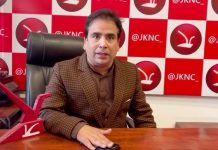
Puppetry styles range from simple rod puppets to larger-than-life figures. Tell us briefly about the different styles.
There are basically four styles or techniques- string puppets, which are suspended from above, rod puppets which are held from behind the puppet or below, glove puppets are worn on the palm of one’s hand and shadow puppets are projected on a surface. Traditionally we used cut out from leather for shadow puppets but these days these days card, acetate and other materials are also used. Besides those mentioned, processional figures could be effigies or giant puppets moved by rods or worn by the puppeteer. Mixed media is a mix of techniques using a combination of actors, objects, masks, dance, etc. There are many hybrid techniques as well. Muppets, made famous by Jim Henson and string puppets in Karnataka.
Essentially, the technique depends on the puppeteer or puppet maker and the kind of story the puppet will play.
Your puppetry goes beyond the usual string and hand-puppets to “semi-sculptural puppets” attached to actors’ bodies and carried across stage. Tell us more about this medium.
There was a blurb for a performance we had based on the Vetalpanchvinasati or Vikram-Betaal cycle of stories and Thomas Maans’ continuum of the same transposed heads. We used large torso figures of puppets attached to the puppeteers’ waist with rods attached to the puppeteers’ heads and rods on the arms for movement. This style was used in our performance transposition based on the above stories, as the archetypes were puppets and their inner voices were human dancers. I had also used this technique in the early 1980s at the Sutradhar Puppet Theatre at the Shri Ram Centre, New Delhi in a performance of the Ramayan.
Tell us about the challenges involved in adapting traditional Indian theatre, like the story of Ram and Sita or the adventures of Vikram and Betaal, into a puppetry format.
Every story has to be adapted to the medium. We do not have people in India who understand or write only for puppet theatre. I use the visual language first — a synopsis of actions, events and drama in the theme and then follow the script. I also use a recorded poem or narration. One of our major scripted plays is ‘Heer Ke Waris’, written by Mahip Singh. We showed ‘Gone Grandmother’ by Chatura Rao in our festival in February. Puppets do not need long spoken text lines. They must emote through their movement, manipulation and actions to synergise with spoken text. Music can also be text as it is in many of my performances.
Ishara creates puppet events, conducts workshops and performances on social awareness themes. Tell us about some of your recent events and what to look forward to.
We do a lot of workshops for students, teachers and adults. We conducted a workshop through SPICMACY for almost 90 participants. In August, we could have a workshop on creating elephant puppets using shadow or other techniques. We cross the bridge as per the requirements of the collaboration. What matters is how we can fit the medium and message together keeping in mind the participants and their age groups.
In 2014, Ishara created puppets for the opera ‘A Flowering Tree’ directed by Vishal Bhardwaj at the Theatre du Chatelet Paris, and also puppets for the song ‘Bismil’ in ‘Haider’. How was the experience of working in Bollywood?
I wouldn’t like to just term Vishal Bhardwaj as Bollywood. I think his work is quite different from what we know as Bollywood. The experience of working with choreographer Sudesh Adhana on the song ‘Bismil’ was really exciting. Incidentally, Sudesh was one of the first dancers in our production of transposition. The puppets added to the storytelling aspect of the song in both ‘A Flowering Tree’ as also in ‘Bismil’. In 2006, we had puppets in a full puppet and actor film ‘A Belly Full of Dreams” directed by Prakash Kovelamudi in Hyderabad. The puppets for film and television need to be made in a different way from those for stage. One can adapt stage puppets for film. However, materials and detailing have to be precise.
Performances of the Ishara Puppet Theatre Trust are not just for children. Some also address adult themes such as HIV/AIDS and substance use. Tell us more about some of these performances.
I believe that puppetry is not only for children. One can say a lot through it which a human actor may not be able to — especially about sensitive issues such as HIV and substance abuse in our cultural context. We collaborated with UNESCO and the EU on a HIV project where we spoke about the modes of transmission and what one should be aware of, discrimination faced by HIV persons, substance addiction and peer pressure among the youth. We have held workshops and trained community workers of Save the Children, Myanmar in the use of puppetry in their communities, tackling disability issues, education, discrimination due to physical disability, etc.
You have worked extensively with street children, including the Salaam Baalak Trust project (2007) for UNESCO Paris and the EU on projects. Tell us more details.
This was the HIV project mentioned above through which one of the first groups of seniors coming out of the Salaam Baalak Trust shelter got involved in both as a profession as well as into civil society. They have gone on to create their puppet groups and were involved in TV shows like ‘Gali Gali Sim Sim’. Ishara Puppet Theatre’s core group is from the original Salaam Baalak Trust kids leading their own lives now.
Having performed and taught at several countries across the world, what has the cultural exchange been like?
I can only say that it has taught me a lot — the exchange of ideas, acceptance of others’ values and cultures and being able to reverse the prism in then seeing what is valuable in my own work and tradition — but above all, the humility in understanding that we all strive and come from a single source. We may believe in varying ideologies but eventually at the core we are nothing but human.

Since 2008, you have been elected as the Union Internationale de la Marionnette (UNIMA)’s first non-European president in the organisation’s 80-year history. Tell us about some of the work you did.
I was elected in 2008 at the UNIMA Congress in Perth, and am still in my third and last term as President, which will end in the 2020 UNIMA Congress in Bali. The Executive Committee consists of 19 members from various continents. Diplomacy is not always easy but when one has some 90 countries as member national centres, one needs to abide with the Constitution of UNIMA and at the same time be able to adapt to the situation. Next year, we will celebrate our 90th anniversary.
What needs to be done to revive puppetry in India?
We have more traditional puppet theatres in India compared to urban puppet theatres. The government needs to be aware of the situation. They should just not sponsor festivals but set up puppet collection museums, conduct workshops and education programmes for puppeteers and artists. We need a platform to nurture good performances from both traditional and modern puppetry. This can happen only if we upgrade the skills and production quality of traditional and young puppeteers. To some extent, the Sangeet Natak Academy(SNA) and UNIMA India have been striving for the same. Hopefully, the Bhartiya Lok Kala Mandal in Udaipur will see a renaissance as one of the major steadfast puppet centres in the country. The SNA gives awards for the same but an impetus also needs to be given to the younger generation as is done in Indonesia and other South Asian countries.
letters@tehelka.com













